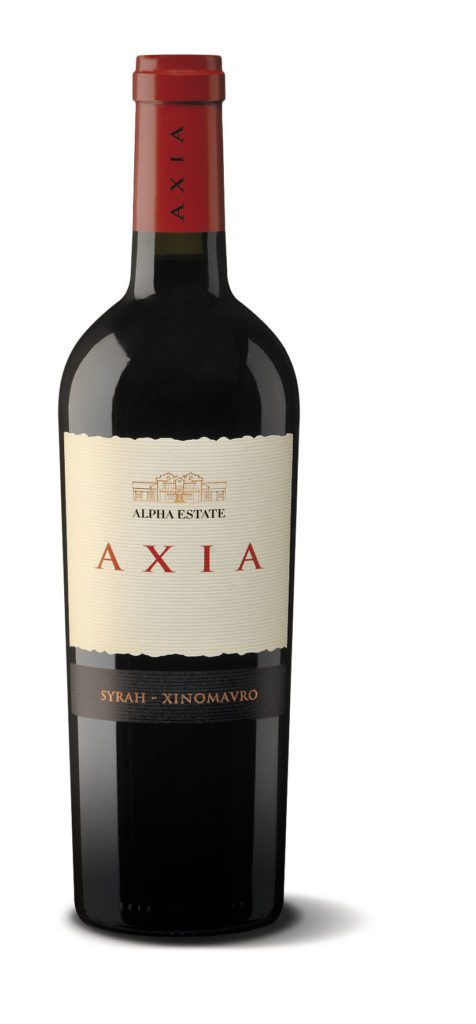WINE
Greece is the word #DrinkGreek

WORDS: Peter Panousis – Peter Pan Wine PHOTOGRAPHY Supplied
Anyone who has been to Greece will have fond memories of the deep blue sea, stony beaches, the rugged mountainous countryside, warm, friendly locals and of course, the simple yet well-prepared delicious food.
If you mention Greek wine, many people revert to memories of that overwhelming ‘pine-o-clean’ wine experience of drinking the intensely perfumed Retsina, a Greek wine fortified with pine tree resin.
Specifically, Retsina originated more than 2000 years ago in Greece, where pine tree resin was used to coat the insides of amphora wine vessels, thus preventing oxygen from seeping through the wine, and to sometimes mask the taste of poorly made wine. Retsina is for the most an acquired taste, to be sure, but does pair well with Greek food.
Retsina became the unlikely wine of choice for foreign visitors at local Tavernas both in Greece and outside of Greece, essentially becoming the wine of initial choice until the first glass or maybe two was consumed. Retsina became synonymous with Greek wine the world over. In recent times however, Retsina has received a much-needed makeover with modern wine-making taking the intimidating wine to Pygmalion transformation – a lighter, more harmonious style where the grapefruit is not overpowered by the pine resin. Greek wines are now in the marketplace taking claim over sweet spots on wine lists, retail shelves and retail fridge space and I’m not just talking about Retsina!
Why Greek wines?
Greek wines are well made by highly trained winemakers (many are graduates of well-known and respected universities and wine colleges or institutes, especially the French ones) and their wines are produced in modern, hi-tech wineries. Greek wines offer a diversity and point of difference for the wine lover with their many grape varieties providing a refreshing alternative to the more traditional offerings in the market. Also due to the extremely varied landscape of Greece, the wines can be highly distinctive and extremely interesting. Furthermore, Greek labels are smart and easy for anglophiles to decipher, usually stating the name of the vineyard, the grape variety/varieties used, vintage, region and appellation. And when it comes to matching Greek food (which is delicious), Greek wine is the perfect match. Greek wines are also identified by geographical indicators or appellations which are similar to the French AOC and Italian DOC/DOCG classifications, thus providing indicators of origin, grape variety, wine making techniques and guaranteeing the quality of the wine.
For example, the highest-rated wines and arguably Greece’s best wines will have the PDO classification meaning Protected Designation of Origin. There are more than 30 PDOs in Greece and they also ensure both grapes and their winemaking must be within the defined area, and maximum yields, and clearly defined oenological practices. Another classification is PGI meaning Protected Geographical Indication or local wines. This classification came about to reinforce the concepts of authenticity and typicality, where the wines come from grapes of traditional geographic regions, prefectures or demarcated areas. As stated in the Wine of Gods site, “the grape varieties may be indigenous or international, and the winemaking must be within the designated area of traditional geographic region, prefecture or of demarcated area respectively”. There are around 120 PGI zones in Greece. Finally, many Greek winemakers use Acacia barrels (but not always), which represent value for money for the consumer.
Greek wine regions
Essentially Greece can be divided into four key regions: the north, south and central regions and the islands, including Crete, Ionian and Aegean. The north, a cold climate high in altitude (up to 750m), includes appellations Macedonia, Amyedeon and Naoussa, with world-class PDO rated wines. The central region, which includes Athens, has appellations such as Attica and Thessaly. The southern region includes the Peloponnese, which is a warmer climate due to its mountainous countryside with elevations of 750m, as well as lower elevations of around 350m and specific appellations including Petra and Nemea. The fourth region, which is earmarked as the islands of Greece, including Crete (the largest of the island regions with four appellations of its own); the Ionian Islands including Kefolonia and Corfu, and finally the Aegean Islands, which include Santorini and Rhodes.
Greek grape varieties and the ones to know
The Greek Wine Federation of Greece claims there are more than 350 native grape varieties in Greece. However, Greece also grows grape varieties such as Sauvignon Blanc, Chardonnay, Syrah, Merlot, Tannat and Cabernet Sauvignon. Some of the well-known grape varieties include:
Assyrtiko [A see tee ko] A key, aromatic white variety known for producing Greece’s finest white wines. The best and most expensive examples come from the island of Santorini however the grape is grown all over Greece. Assyritko has a minerally edge, sometimes with flint and or briny notes, crisp piercing acidity and flavours of citrus. I liken it to an Eden Valley Riesling.
Malagousia [Mah lah gou zya] Another key white grape variety that grows best in northern Greece, but good examples are found all over the country. The grape shows notes of peach, jasmine, mint and orange blossoms and wines are medium to full bodied, with a texture and oiliness not unlike Viognier and ‘old-school’ Chardonnay.
Savatiano [Sa va tee ano] Claims to be Greece’s most-planted grape. It grows particularly well in central Greece and is used extensively to make Retsina and Roditis. The variety produces wines with low acidity with citrus and lemon curd and a creamy but dry palate. It is likened to young, unoaked Chardonnay.
Roditis [Ro dee tees] Also known as Alepou, Roditis is pink skinned and grows best in the warmer, central parts of Greece. When made into a wine it can be either white or red (rose) in colour and shows notes of apple, pear, banana, pineapple and citrus, with medium acidity and a light, oily texture. The grape variety is used to make Retsina, but on its own one can liken it to a Pinot Gris.
Moschofilero [Mos ko fee le ro] Another pink-skinned variety which grows best in the warm southern parts of the southern region of the Peloponnese. The variety is used for making both white and rosè style wines that are fruity and or spicy. Intensely pungent, this grape can show notes of fragrant citrus, apricots, lychee, musk and rose petals. Wines made with this variety can be likened to a dumbed-down Gewürztraminer or Traminer.
Agiorgitiko [Ah yor yee ti ko] A red variety named after Saint George and regarded as one of the most noble of the Greek grapes. The variety grows best in the warmer southern parts of Greece, namely the Peloponnese area. Wines made from this grape are deep in colour and show notes of plum, low acidity and soft tannins. Think Merlot!
Limnionia [Lim neo nee ah] One of the ancient grapes of Greece dating back more than 3000 years, it is rare and not to be mistaken for Limnio. It grows best in the northern, cooler parts of Greece but has an emerging presence over many parts of the country. The wines are deep in colour, expressive of terroir and dark red fruits, cinnamon and clove spice. The tannins are mild, acid is high and there is great depth to the wine. If you like big Pinot Noirs from Pommard or Central Otago, you will like wines made from Limnionas.
Xinomavro [Ksee no ma vro] Another red grape that grows particularly well at Greece’s most northerly wine regions of Naoussa and Amyndeon. The English translation is ‘sour black’ and many wine scribes describe this grape as the ‘Barolo of Greece’ or Greece’s answer to Nebbiolo. Xinomavro is used to make both white and red sparkling wines, rosés and reds. As red wine, Xinomavro shows dark cherry, liquorice, Chinese all spice, layered complexity, structure and is very tannic. Like Barolo, Xinomavro ages well.
What to consider
Try the Gavalas Winery Assyrtiko from Santorini. The Gavalas family are fifth generation winemakers and own one of the oldest wineries in Santorini. They have a 300-year history and the winery produces around 7000 dozen a year. Santorini’s soil consists of lava and volcanic ash and is responsible for producing minerally, dry and crisp Assyrtiko. The wine, which is made in stainless steel and lies on fine lees for five months before bottling, shows notes of citrus, peaches, pear, piercing acidity and briny saltiness with a full-textured mid palate. This wine pairs well with calamari, fish and other white meats.
Another interesting white wine is the Skouras White Cuvée Prestige. The Skouras winery was established in 1986 and is located in Nemea, in Greece’s southern region. The wine is made from both Moschofilero and Alepou (also known as Roditis). Grapes are sourced from 30-40-year-old vines from elevations of 400m to 700m (think Eden Valley and Adelaide Hills). The juice is kept in stainless steel on fine lees for a short period of time. For me, this is Sauvignon Blanc meets Pinot Gris with notes of passionfruit, nectarine apricot, pear and citrus with a slippery texture and an oiliness and body of Pinot Gris. So good! Think Asian inspired dishes.
Finally, a Xinomavro blend from Alpha Estate called Axia, meaning ‘worth or valuable’. Alpha Estate is located in the north of Greece, in Amyndeon, and the modern, hi-tech winery was established in 1997. The altitude here is upwards of 700m, so think the cool climate of Orange, NSW territory. The winery is sleek, with a natural gravity feed system with no pumps and the state of the art machinery and equipment satisfies the winemaker’s philosophy: “ABSOLUTE RESPECT TO THE ECOSYSTEM, THE VINE GROWER AND THE WINE LOVER”. Alpha Estate Axia is usually made of 50 per cent Xinomavro and Syrah. The grapes are hand harvested, destemmed and aged in oak for 12 months and a further 12-15 months in the bottle. A cracker wine that would suit the great Aussie palate, it shows pepper, ripe, dark berry notes and vanilla with rounded tannins. A pure delight with most meat dishes.
Where to find Greek wines…
Available at all good retailers including Dan Murphy’s and Emmanuel’s at Kingscliff, but on the Gold Coast, Ferry Road Wine and Beer has arguably the best range in Queensland. Greek wines are also starting to be listed in many Greek and non-Greek restaurants on the Gold Coast and in the Northern Rivers.
Raised on the Gold Coast, Peter Panousis is a Fine Wine Consultant who has operated many restaurants and cafes. Formally educated with a Degree in Hospitality, Peter is WSET trained and has undertaken extensive wine education. He is also a Member of ASVO (The Australian Society of Viticulture and Oenology), and an Associate Fellow with AIM (Australian Institute of Management).
See more from Peter @peterpanwine on Facebook, Twitter and Instagram.










